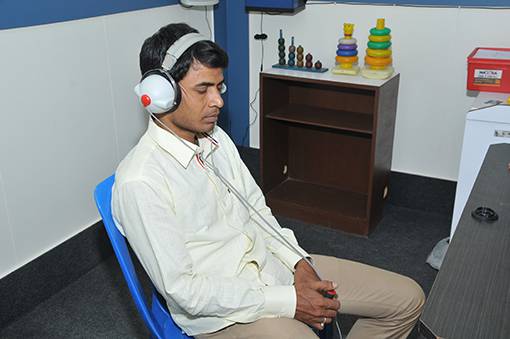Pure Tone Audiometry

This subjective test is the mother of all audiological tests. Though it is a subjective test (i.e. the test result are dependent upon the subject’s responses and if the subject responds erroneously then a wrong report is obtained), yet it is the most informative test in the audiological test battery and is a very reliable test if done by a reliable person. It gives an idea of the hearing threshold in the different frequencies and also tells us whether the subject has any deafness. If there is deafness it tells us whether the deafness is due to defect in the middle ear or in the inner ear or in the nerve of hearing. Localising tests like TDT, SISI, ABLB and glycerol tests which help in diagnosing the nature and site of lesion are also a part of the audiometry test. The pure tone audiometry test requires a very sophisticated acoustically treated set up as the test needs to be carried out ina very very quiet atmosphere and tests done in noisy places are erroneous. The test takes a minimum of about 20-30 minutes but in some patients who respond inconsistently it may take a much longer time. Hurriedly done tests are usually erroneous.Vertigo and Deafness Clinic has two professionally done sound attenuated set-ups for audiometry test. The instruments used in this clinic are OTOMETRICS Madsen ASTERA 2 audiometer, from Denmark, Unity Systems (siemens) audiometer, an audiometer from Labat Italy and also a local ALPS audiometer. The tests are done by qualified audiologists. Vertigo and Deafness Clinic also has arrangements for HIGH FREQUENCY AUDIOMETRY whereby the hearing threshold can be evaluated for the full range of human hearing right upto 20,000Hz. In routine pure tone audiometry the hearing threshold is evaluated only upto 8000Hz. The highend sophisticated audiometers at Vertigo and Deafness Clinic also allow the complete TINNITUS evaluation whereby tinnitus matching, masking, and all other tinnitus paramters (frequency / intensity / maskability) can be accurately measured.

